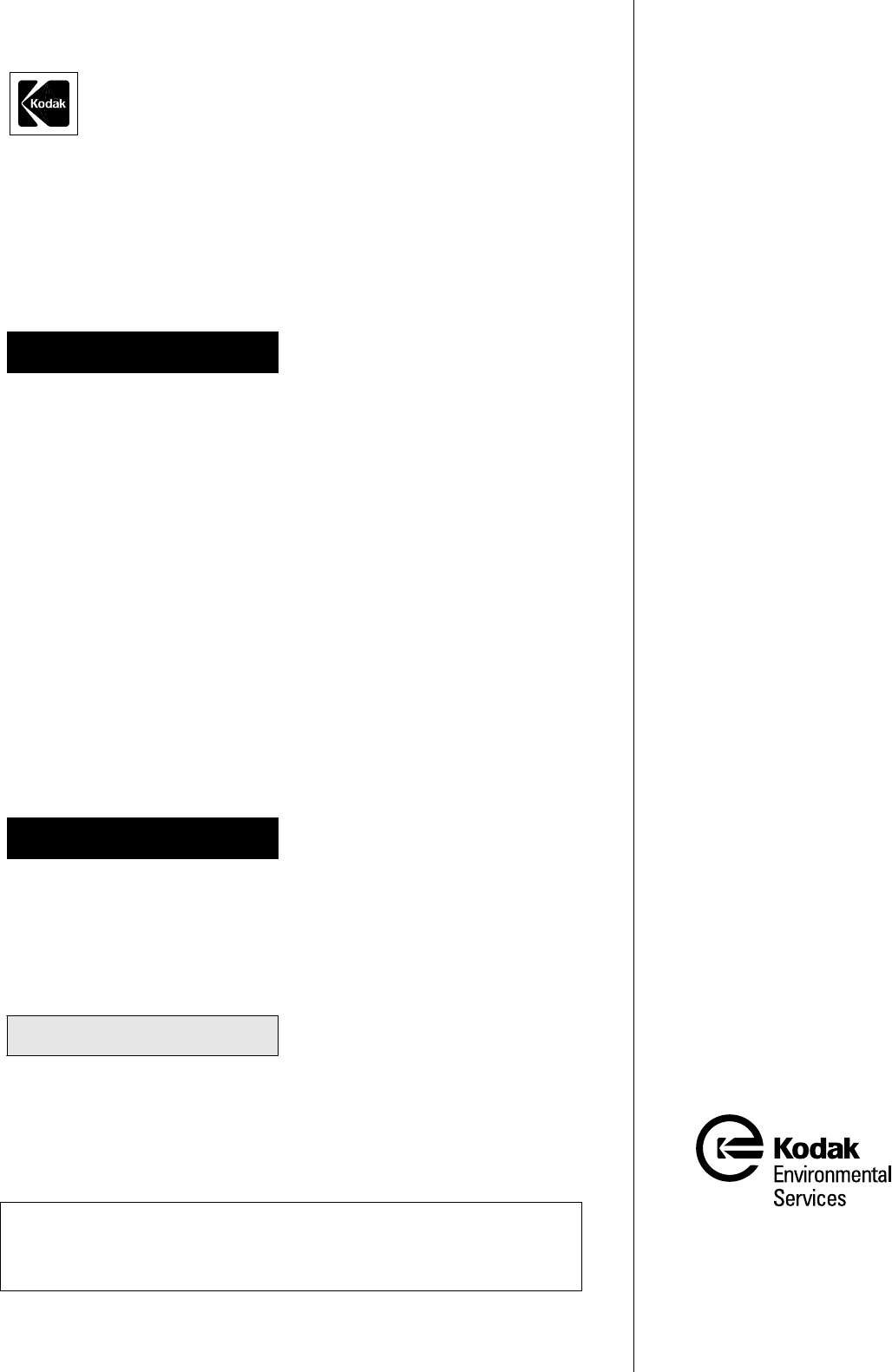
©Eastman Kodak Company, 1997
Kodak’s health, safety,
and environmental
publications are available
to help you manage your
photographic processing
operations in a safe,
environmentally sound
and cost-effective
manner. This publication
is part of a series of
publications on health and
safety issues affecting
photographic processing
facilities. It will help you
meet the requirements of
the OSHA Hazard
Communication Standard.
Environment
INFORMATION FROM KODAK
J-98A
Safe Handling of Photographic
Processing Chemicals
Every substance we come in to
contact with is composed of
chemicals— the food we eat, the air
we breathe, the clothing we wear,
the medicine we take. Although
most of these chemicals are not
hazardous, you may need to take
precautions to limit the exposure to
some chemicals that could be
harmful. For example, direct skin
or eye contact with or inhalation of
vapors or mists from some
household cleaning products can
be irritating.
When handled properly,
photographic processing chemicals
are safe to use. Follow the
guidelines below to minimize the
potential hazardous effects of these
chemicals.
Safe handling of chemicals requires
that you recognize and avoid the
potential hazards. Learning more
about photographic processing
chemicals reduces the possibility of
illness or injury.
Kodak provides warning and
precautionary statements on
INTRODUCTION
BE INFORMED
LABELING
product labels, instruction sheets,
and packaged products. Kodak also
provides labels for processor and
replenishment tanks. Kodak
evaluates photographic processing
chemicals for potential health and
physical hazards. When a
photographic processing chemical
has little, if any, potential hazard,
the statement “LOW HAZARD
FOR RECOMMENDED
HANDLING” is included on the
label.
Photographic processing
chemicals that are potentially
hazardous have appropriate
precautionary statements, such as:
• A Signal Word—such as
“CAUTION,” “WARNING,” or
“DANGER!”
• A Statement of Hazard—such as
“CAUSES SKIN AND EYE
BURNS,” “HARMFUL IF
ABSORBED THROUGH SKIN,”
or “FLAMMABLE,” that tells
what the potential hazard is.
• Precautionary Wording—such
as “Do not get in eyes, on skin, or
on clothing,” or “Keep away
from heat, sparks, and flame,”
that describes how hazards can
be avoided.
• First-Aid Statements are also
included on labels and signs that
describe immediate measures
you must take in case of contact
with or overexposure to a
photographic processing
chemical.
This publication is meant to assist others with their compliance programs. However, this is
not a comprehensive treatment of the issues. We cannot identify all possible situations and
ultimately it is the reader’s obligation to decide on the appropriateness of this information to
his/her operation.
